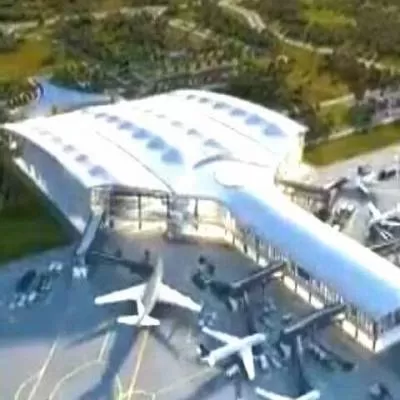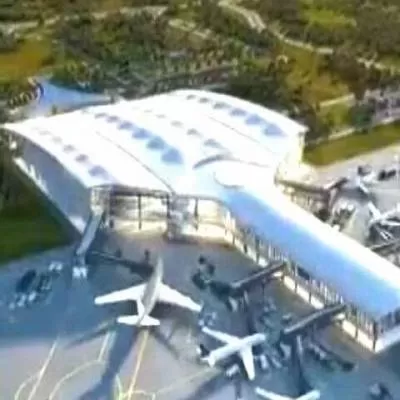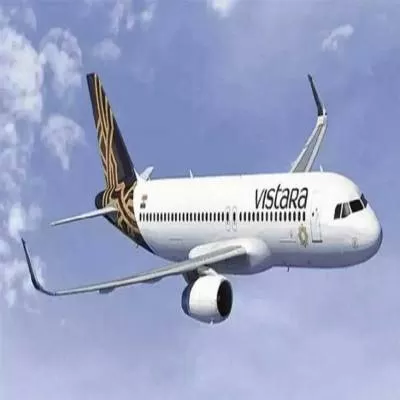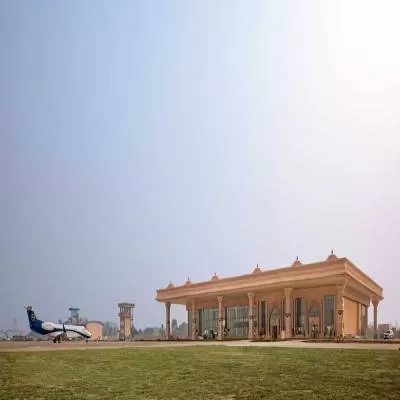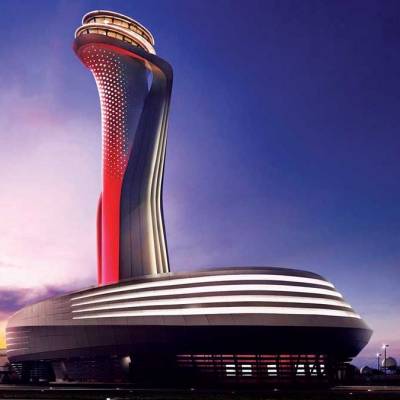- Home
- Infrastructure Transport
- AVIATION & AIRPORTS
- The Indonesian Government plans to offer 43 infra projects to private investors next year
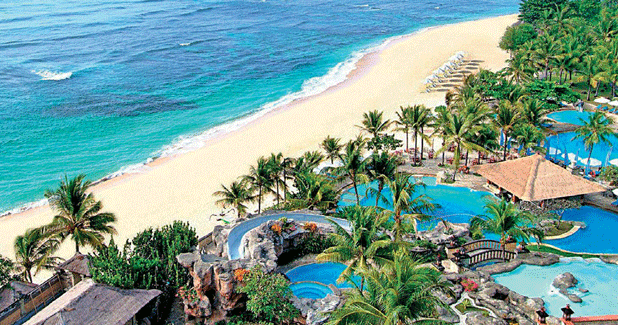
The Indonesian Government plans to offer 43 infra projects to private investors next year
History reveals that the relationship between India and Indonesia dates back to first century AD when Indian traders were the first to arrive in Indonesia. Through the years, the trade and cultural links have continued with the potential for mutually beneficial economic opportunities growing further. Consider the fact that the Indian economy is the 10th largest in the world by nominal GDP and the third largest by purchasing power parity (PPP). It is one of the G-20 major economies, a member of BRICS and a developing economy that is among the top 20 global traders, according to the World Trade Organisation (WTO). Indonesia too, is a member of the G-20 and the 10th largest by PPP.
Saut Siringoringo, Consul General of the Republic of Indonesia, Mumbai, elaborates upon these opportunities in a tOte-a-tOte with SHRIYAL SETHUMADHAVAN.
What emphasis does Indonesia place on India as a trade partner?
Both Indonesia and India share much in common: Geographical expanse, size and diversity of the population, culture, history and a colonial past as well as a similar direction of foreign policy in the post-independence era. The implementation of the ASEAN-India Free Trade Agreement (AIFTA) has contributed to increased trade relations. Bilateral trade reached $16.99 billion in 2013; the target for 2015 is $25 billion. Just recently, the leaders of the two nations - Indian Prime Minister Narendra Modi and Indonesian President Joko Widodo - had a meeting in Naypyidaw, Myanmar, on developing stronger economic ties. However, bilateral trade has not been optimal in other sectors apart from coal and crude palm oil (CPO); concrete plans will be made to overcome this issue. Both countries have proven their economic strength through their increasing GDP that puts us both in the $1 trillion club.
Indian companies have significant investments in Indonesia´s infrastructure and vice-versa...
Indonesia attracted a total of $28.17 billion as FDI in 2013, up 22.4 per cent from the previous year. India´s share for FDI in Indonesia for 2013 stood at 121 projects with a total investment of $64.9 million. Emerging sectors to explore would be industries in basic metal, oil refinery, basic organic chemicals, machinery, renewable resources and communication devices (ICT). Further, there is immense scope to increase cooperation in the fields of science and technology, agriculture, ecological conservation, ICT and biotechnology.
Many prominent Indian companies like Tata Power, Reliance, Adani, L&T, GMR, GVK, Punj Lloyd, Aditya Birla, Jindal Stainless Steel, ESSAR, BEML, Godrej, TCS, SBI and Bank of India, have established their footprint in Indonesia...
India´s investment in Indonesia is continuously increasing in various sectors such as textiles, metal, automotives, machinery, coal and electronics. Indian investors operating in Indonesia also includes Tata Automobile. While targeting the ASEAN countries, Japan, South Korea, and Taiwan, the main investment sources, the Indonesian Investment Coordinating Board (BKPM) now targets new investors from the Middle East, China, and India. Indonesia offers investment opportunities in energy (conventional as well as renewable), infrastructure, mining, automobile, power, manufacturing, agriculture, textile and IT.
Introduce us to some prominent Indonesian firms offering their expertise to India´s infrastructure development.
India is a leading potential partner country for Indonesia, and lately investment has started flowing from Indonesia to India. In the past, Indonesia-based Salim Group invested in real-estate and infrastructure projects. While other Indonesian companies who have recently expanded in India are not in the infrastructure sector, there are abundant opportunities to invest. However, regulations on trade and investment in Indonesia and India have yet to become more appealing to both countries´ business sectors to increase interest and eventual presence.
How do you view the potential for stronger India-Indonesia ties in the construction space?
Indonesia is undergoing rapid transformation and growth, and is slated to grow annually by 6 per cent to become the world´s fifth largest market in 2025. Major projects under construction are in the infrastructure, industrial, power and office spaces. A recent Aecom survey found that Jakarta is viewed as the No. 1 city in the region for potential market growth and profitability. There is also increased activity in property development outside Jakarta in suburbs and secondary cities throughout Indonesia. Such projects include residential complexes, apartments, shopping malls and townships. Developers and investors see investment potential in secondary cities such as Bandung, Surabaya, Yogyakarta and Semarang. Apart from those cities in Java, development is advancing in cities such as Medan and Palembang in Sumatra, Balikpapan, Pontianak, Makassar and Lombok, along with the property boom in Bali while in India we can see Mumbai, Bengaluru, Ahmedabad, Pune, Chennai, Goa and Delhi as the most-favoured property investment destinations.
Recently, Indonesia accepted a soft loan from India for investment in power infrastructure. Highlight the opportunity.
India has offered the government of Indonesia a soft loan of $500 million to support the development of power infrastructure in the country. Indonesian Vice President Jusuf Kalla welcomed it, stating that steps would be taken to identify appropriate projects. The Master Plan for the Acceleration and Expansion of Indonesia´s Economic Development 2011-2025 (MP3EI), prepared by the Coordinating Ministry for Economic Affairs, is an ambitious blueprint to transform Indonesia into one of the 10 major economies in the world by 2025. Implementation of MP3EI will include eight main programmes: Agriculture, mining, energy, industrial, marine, tourism, telecommunications and the development of s trategic areas across six Indonesian economic corridors. The development of the corridors will require an increase in power supply and we are sure Indian power companies will definitely look forward to developing power infrastructure in Indonesia. Further, the Indonesian Government is consistently sustaining the momentum of PPP development to accelerate infrastructure building.
Please tell us about some important projects both countries are collaborating on.
The Indonesian Government plans to offer 43 infrastructure projects worth $52 billion to private investors next year (The National Development Planning Ministry) to construct 35,000 mw power plants with a 5,000 mg plant in Cilacap, Central Java, as the pilot project; to increase the electrification ratio to 96.6 per cent of the nation´s population by 2019 from the current 81.4 per cent; and to build 25 dams in five years from our fuel subsidy to maintain water supply to farming areas. Plans are also being laid to increase the capacity of Jakarta´s Tanjung Priok Port. In 2009, capacity was 3.6 million teu a year and the government plans to make it around 15 million teu by 2017. This is the potential for ports in Indonesia. Further, indicators for increasing and intensifying bilateral cooperation include several Memorandum of Agreements (MoA) signed by the governments and business enterprises of the two countries since 2005, including 34 MoUs or agreements, which reflect the strong determination of both sides to take bilateral cooperation to a higher level. Further, in recent times, both sides have also agreed to review and implement various MoUs signed between the two.
When Prime Minister Modi recently met President Widodo at the ASEAN summit, he had invited Indonesia to take part in India´s growing real-estate sector. What expertise can the country lend?
In Indonesia, there are several reputed contractors that can be recommended to work together with investors for construction projects in India as partner for investment, JV contractor or join operation and contractor. As a country with a large population of productive age, Indonesia has many engineers, architects, interior designers, landscapers and other professional support. We also have specialist contractors in mechanical, electrical, substructure and others. Materials such as cement, steel bar, concrete pile, glass, asphalt are available from local production and imports. Various brands of heavy equipment such as cranes, tractors, bulldozers, concrete pumps and excavators are also available.
How can Indonesia contribute to Prime Minister Modi´s ´Make in India´ initiative?
India is the world´s second most populated country with 1.25 billion people. It is an important engine of the world´s economic growth.
The ´Make in India´ move is considered as a breakthrough to open the country´s economy for investment. We hope more Indonesian companies will invest in India to strengthen ties between the two countries. Business partnership in sectors such as financing, automotive and textile must be strengthened as both countries have huge markets in these sectors. Indonesia and India are in talks on a comprehensive economic cooperation agreement (CECA), a free-trade agreement and other economic cooperation deals. As we have new governments in both India and Indonesia, the opportunity to boost bilateral relations across all fields is great.
How can both countries work towards overcoming challenges in their bilateral relations, if any?
Indonesia and India should work together to bridge the knowledge gap about investing in each other´s countries by facilitating more frequent exchange of delegations. More discussions between stakeholders need to take place, especially in the business sector. While taking note of the significant increase of international trade of both countries, we have always urged business leaders from India and Indonesia to come forward to explore trade opportunities, especially in filling gaps in both countries. Direct trade between the two countries would automatically result in a win-win situation.
FACT FILE
- Bilateral trade between India and Indonesia reached $16.99 billion in 2013; the target for 2015 is $25 billion.
- Both countries have proven their economic strength through their increasing GDP that puts them both in the $1 trillion club.
- Major projects under construction in Indonesia: Infrastructure, industrial, power and office spaces.
- India has offered the government of Indonesia a soft loan of $500 million to support the development of power infrastructure in the country.
- Saut Siringoringo
- Republic of Indonesia
- Mumbai
- PPP
- World Trade Organisation
- WTO
- ASEAN-India Free Trade Agreement
- AIFTA
- Narendra Modi
- Joko Widodo
- Crude Palm Oil
- CPO
- Concrete
- GDP
- FDI
- ICT
- Tata Power
- Reliance
- Adani
- L&T
- GMR
- GVK
- Punj Lloyd
- Aditya Birla
- Jindal Stainless Steel
- ESSAR
- BEML
- Godrej
- TCS
- SBI
- Bank of India
- Textiles
- Metal
- Automotives
- Machinery
- Coal
- Electronics,
- Saut Siringoringo, Consul General of the Republic of Indonesia, Mumbai History reveals that the relationship between India and Indonesia dates back to first century AD when Indian traders were the first to arrive in Indonesia. Through the years, the trade and cultural links have continued with the potential for mutually beneficial economic opportunities growing further. Consider the fact that the Indian economy is the 10th largest in the world by nominal GDP and the third largest by purchasing power parity (PPP). It is one of the G-20 major economies, a member of BRICS and a developing economy that is among the top 20 global traders, according to the World Trade Organisation (WTO). Indonesia too, is a member of the G-20 and the 10th largest by PPP. Saut Siringoringo, Consul General of the Republic of Indonesia, Mumbai, elaborates upon these opportunities in a tOte-a-tOte with SHRIYAL SETHUMADHAVAN. What emphasis does Indonesia place on India as a trade partner? Both Indonesia and India share much in common: Geographical expanse, size and diversity of the population, culture, history and a colonial past as well as a similar direction of foreign policy in the post-independence era. The implementation of the ASEAN-India Free Trade Agreement (AIFTA) has contributed to increased trade relations. Bilateral trade reached $16.99 billion in 2013; the target for 2015 is $25 billion. Just recently, the leaders of the two nations - Indian Prime Minister Narendra Modi and Indonesian President Joko Widodo - had a meeting in Naypyidaw, Myanmar, on developing stronger economic ties. However, bilateral trade has not been optimal in other sectors apart from coal and crude palm oil (CPO); concrete plans will be made to overcome this issue. Both countries have proven their economic strength through their increasing GDP that puts us both in the $1 trillion club. Indian companies have significant investments in Indonesia´s infrastructure and vice-versa... Indonesia attracted a total of $28.17 billion as FDI in 2013, up 22.4 per cent from the previous year. India´s share for FDI in Indonesia for 2013 stood at 121 projects with a total investment of $64.9 million. Emerging sectors to explore would be industries in basic metal, oil refinery, basic organic chemicals, machinery, renewable resources and communication devices (ICT). Further, there is immense scope to increase cooperation in the fields of science and technology, agriculture, ecological conservation, ICT and biotechnology. Many prominent Indian companies like Tata Power, Reliance, Adani, L&T, GMR, GVK, Punj Lloyd, Aditya Birla, Jindal Stainless Steel, ESSAR, BEML, Godrej, TCS, SBI and Bank of India, have established their footprint in Indonesia... India´s investment in Indonesia is continuously increasing in various sectors such as textiles, metal, automotives, machinery, coal and electronics. Indian investors operating in Indonesia also includes Tata Automobile. While targeting the ASEAN countries, Japan, South Korea, and Taiwan, the main investment sources, the Indonesian Investment Coordinating Board (BKPM) now targets new investors from the Middle East, China, and India. Indonesia offers investment opportunities in energy (conventional as well as renewable), infrastructure, mining, automobile, power, manufacturing, agriculture, textile and IT. Introduce us to some prominent Indonesian firms offering their expertise to India´s infrastructure development. India is a leading potential partner country for Indonesia, and lately investment has started flowing from Indonesia to India. In the past, Indonesia-based Salim Group invested in real-estate and infrastructure projects. While other Indonesian companies who have recently expanded in India are not in the infrastructure sector, there are abundant opportunities to invest. However, regulations on trade and investment in Indonesia and India have yet to become more appealing to both countries´ business sectors to increase interest and eventual presence. How do you view the potential for stronger India-Indonesia ties in the construction space? Indonesia is undergoing rapid transformation and growth, and is slated to grow annually by 6 per cent to become the world´s fifth largest market in 2025. Major projects under construction are in the infrastructure, industrial, power and office spaces. A recent Aecom survey found that Jakarta is viewed as the No. 1 city in the region for potential market growth and profitability. There is also increased activity in property development outside Jakarta in suburbs and secondary cities throughout Indonesia. Such projects include residential complexes, apartments, shopping malls and townships. Developers and investors see investment potential in secondary cities such as Bandung, Surabaya, Yogyakarta and Semarang. Apart from those cities in Java, development is advancing in cities such as Medan and Palembang in Sumatra, Balikpapan, Pontianak, Makassar and Lombok, along with the property boom in Bali while in India we can see Mumbai, Bengaluru, Ahmedabad, Pune, Chennai, Goa and Delhi as the most-favoured property investment destinations. Recently, Indonesia accepted a soft loan from India for investment in power infrastructure. Highlight the opportunity. India has offered the government of Indonesia a soft loan of $500 million to support the development of power infrastructure in the country. Indonesian Vice President Jusuf Kalla welcomed it, stating that steps would be taken to identify appropriate projects. The Master Plan for the Acceleration and Expansion of Indonesia´s Economic Development 2011-2025 (MP3EI), prepared by the Coordinating Ministry for Economic Affairs, is an ambitious blueprint to transform Indonesia into one of the 10 major economies in the world by 2025. Implementation of MP3EI will include eight main programmes: Agriculture, mining, energy, industrial, marine, tourism, telecommunications and the development of s trategic areas across six Indonesian economic corridors. The development of the corridors will require an increase in power supply and we are sure Indian power companies will definitely look forward to developing power infrastructure in Indonesia. Further, the Indonesian Government is consistently sustaining the momentum of PPP development to accelerate infrastructure building. Please tell us about some important projects both countries are collaborating on. The Indonesian Government plans to offer 43 infrastructure projects worth $52 billion to private investors next year (The National Development Planning Ministry) to construct 35,000 mw power plants with a 5,000 mg plant in Cilacap, Central Java, as the pilot project; to increase the electrification ratio to 96.6 per cent of the nation´s population by 2019 from the current 81.4 per cent; and to build 25 dams in five years from our fuel subsidy to maintain water supply to farming areas. Plans are also being laid to increase the capacity of Jakarta´s Tanjung Priok Port. In 2009, capacity was 3.6 million teu a year and the government plans to make it around 15 million teu by 2017. This is the potential for ports in Indonesia. Further, indicators for increasing and intensifying bilateral cooperation include several Memorandum of Agreements (MoA) signed by the governments and business enterprises of the two countries since 2005, including 34 MoUs or agreements, which reflect the strong determination of both sides to take bilateral cooperation to a higher level. Further, in recent times, both sides have also agreed to review and implement various MoUs signed between the two. When Prime Minister Modi recently met President Widodo at the ASEAN summit, he had invited Indonesia to take part in India´s growing real-estate sector. What expertise can the country lend? In Indonesia, there are several reputed contractors that can be recommended to work together with investors for construction projects in India as partner for investment, JV contractor or join operation and contractor. As a country with a large population of productive age, Indonesia has many engineers, architects, interior designers, landscapers and other professional support. We also have specialist contractors in mechanical, electrical, substructure and others. Materials such as cement, steel bar, concrete pile, glass, asphalt are available from local production and imports. Various brands of heavy equipment such as cranes, tractors, bulldozers, concrete pumps and excavators are also available. How can Indonesia contribute to Prime Minister Modi´s ´Make in India´ initiative? India is the world´s second most populated country with 1.25 billion people. It is an important engine of the world´s economic growth. The ´Make in India´ move is considered as a breakthrough to open the country´s economy for investment. We hope more Indonesian companies will invest in India to strengthen ties between the two countries. Business partnership in sectors such as financing, automotive and textile must be strengthened as both countries have huge markets in these sectors. Indonesia and India are in talks on a comprehensive economic cooperation agreement (CECA), a free-trade agreement and other economic cooperation deals. As we have new governments in both India and Indonesia, the opportunity to boost bilateral relations across all fields is great. How can both countries work towards overcoming challenges in their bilateral relations, if any? Indonesia and India should work together to bridge the knowledge gap about investing in each other´s countries by facilitating more frequent exchange of delegations. More discussions between stakeholders need to take place, especially in the business sector. While taking note of the significant increase of international trade of both countries, we have always urged business leaders from India and Indonesia to come forward to explore trade opportunities, especially in filling gaps in both countries. Direct trade between the two countries would automatically result in a win-win situation. FACT FILE Bilateral trade between India and Indonesia reached $16.99 billion in 2013; the target for 2015 is $25 billion. Both countries have proven their economic strength through their increasing GDP that puts them both in the $1 trillion club. Major projects under construction in Indonesia: Infrastructure, industrial, power and office spaces. India has offered the government of Indonesia a soft loan of $500 million to support the development of power infrastructure in the country.


